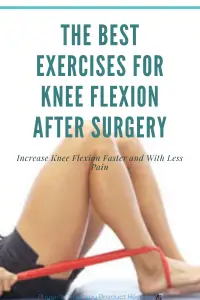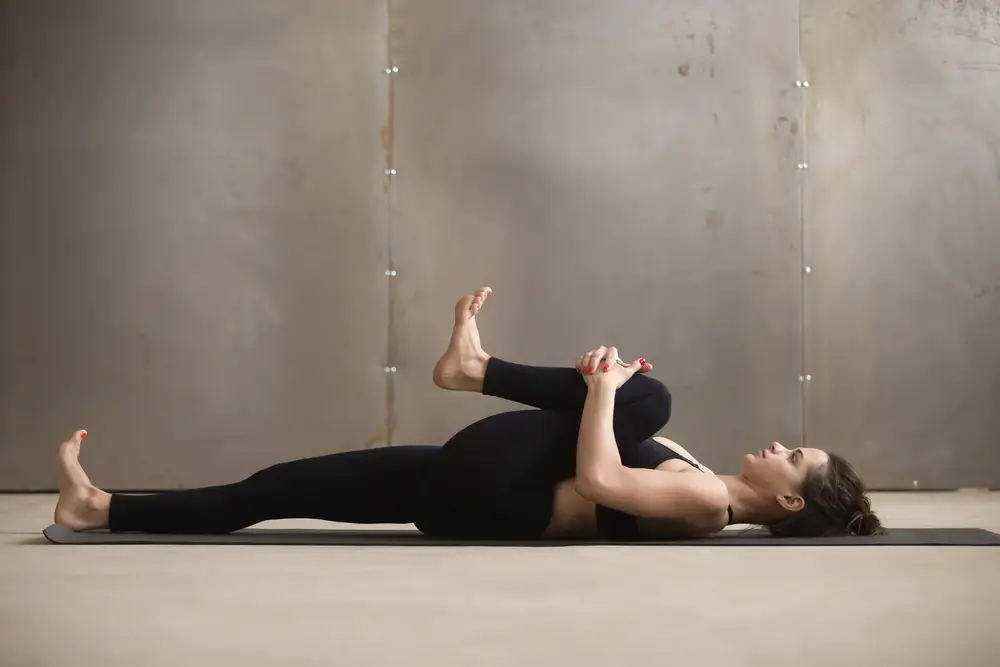Increasing Knee Flexion After Surgery
 There are an estimated 600,000 total knee replacement surgeries performed annually in the United States (1). Advances in surgical materials and techniques have led to decreased hospital stays; however, this means that more responsibility is placed on the patient in managing their own recovery. Perhaps the single most important factor that will lead to better outcomes for patients is improving range of motion. However, this proves to be a major challenge for most patients. Here are a few tips on how to make improving your knee flexion range of motion after knee replacement surgery easier and less painful.
There are an estimated 600,000 total knee replacement surgeries performed annually in the United States (1). Advances in surgical materials and techniques have led to decreased hospital stays; however, this means that more responsibility is placed on the patient in managing their own recovery. Perhaps the single most important factor that will lead to better outcomes for patients is improving range of motion. However, this proves to be a major challenge for most patients. Here are a few tips on how to make improving your knee flexion range of motion after knee replacement surgery easier and less painful.
Tips To Improve Knee Flexion
Warm Up First
Any great workout will include a good warm-up routine. Regaining your knee’s range of motion is no different. You should always warm up – either by taking a short walk, a warm shower, or by applying a hot pack to the affected knee. This will help your muscles, tendons, and ligaments to be more flexible and will also make the upcoming exercises less painful.
Hold Your Stretches
This step is often overlooked because the majority of people don’t hold stretches long enough. You should hold your stretches for at least 30 seconds and gradually work your way up to holding them for two to three minutes. It is important not to move or bounce during your stretch. Simply maintain a good consistent stretch and take short breaks in between repetitions as needed.
Be Consistent!
The key to gaining a greater range of motion is to set a stretching schedule and stick to it. For the first few weeks after surgery, you’ll want to stretch about three to five times per week. Keep in mind that the more consistent you are with stretching the greater its effects.
After Stretching, Take Care of the Knee
The kne might be sore after working it and stretching but thats ok. That means that you did a good job working it. Some of the best ways to help with discomfort after prolonged stretching include using a hot pack, wearing a compression sleeve, or doing some light movements afterwards to pump out the swelling. Our favorite knee compression sleeves are the Crucial Compression Knee sleeves.
The Best Exercises To Increase Knee Range of Motion
Heel Slides with a Strap
To perform this exercise you will need to sit on a flat surface and make sure that your back is supported. Place a towel under your heel so that it can easily glide. Next, take a stretching strap and place it around your foot and hold the strap firmly with both hands.
Your leg should be fully extended in front of you with your toes pointing straight up – this will be the starting position. Your arms will be doing the majority of the work during this exercise.
To begin, pull your foot towards your body by pulling on the straps. Pull until you feel a good stretch in your knee. Hold this position for 20 seconds, then release your foot and allow it to go back to the starting position. Repeat these steps for a total of 20 times.
Knee Flexion Wall Slides with Assistance
For this exercise, you will need to lie with your back on the floor and place your foot on the wall with a towel under your foot. Slide your leg to fully extend it and then slowly allow your foot to slide down the wall. Once your knee bends to a 90-degree angle you should push your heel towards the wall for ten seconds. Then, relax the knee and fully extend your leg again. Repeat as many times as prescribed.
Once you have gained comfort with this level of the exercise, you kick it up a notch by placing your other leg over your involved leg and allow it to rest comfortably. Then, repeat the exercise just as described above. This modification will aid you in being able to gain greater knee flexion.
Seated Knee Flexion
This movement will require that you sit on the edge of a bed or chair and allow your leg to hang. Your knee will be close to a 90-degree angle. Next, place your other leg in front and gently press it back against the involved leg until you feel a good stretch. Repeat this movement as prescribed. Try to hold at least longer than 30 seconds and can hold longer than 2 minutes. This exercise is easy to do at work, on the edge of the couch, or at the dinner table chair. There really is no excuse for not doing it often.
Prone Flexion with a Strap
To perform this exercise you will need to attach a belt to the ankle of your involved leg. Next, lie face down on a table or flat surface. Your arms should be in front of you with your hands holding the end of the belt which will be stretched across your back. Gently pull on the belt to bring your ankle forward and bend your knee. Perform 20 reps with each session and repeat as often as prescribed. With continued sessions you should eventually be able to reach a greater degree of bend (flexion) in your knee.
Stair Knee Flexion Stretch
As the name implies, this stretch will require you to utilize stairs. Start by placing the foot of your involved knee on the first step. While standing straight up, gently lean your body towards the stairs as far as is comfortable. This movement will help with knee flexion. Next, rock your body away from the stairs in order to gain the added benefit of knee extension. Once you are able to perform this level of the exercise easily you can move your foot to the second step and repeat the movements above. You’ll want to perform this exercise twice daily, spending about three to five minutes per session. If you don’t have a step at home then an aerobic step works just as good and can be moved around the house.
Conclusion
Recovery from total knee replacement surgery comes with certain challenges, especially regaining your knee’s range of motion. However, by following these simple, yet effective exercises you can improve your knee flexion and soon enjoy perhaps the best range of motion you’ve experienced in years.
Sources:
- Foran, Jared, et al. “Treatment: Total Knee Replacement.” OrthoInfo. Last reviewed August 2015. https://orthoinfo.aaos.org/en/treatment/total-knee-replacement/
- Coury & Buehler Physical Therapy. “Knee Flexion Stretch.” YouTube, 26 Oct. 2015, https://www.youtube.com/watch?v=BVG2-vxNqus.
- Tangelo – Seattle Chiropractor + Rehab. “Range of Motion Wall Slides – Kinetic U Exercise Series.” YouTube, 8 Mar. 2016, https://www.youtube.com/watch?v=vcGrvxYWNbY.
- EmergeOrtho. “Sitting Knee Flexion.” YouTube, 9 July 2014, https://www.youtube.com/watch?v=nscaiz1wy6U.
- HEP togo. “PRONE KNEE FLEXION STRETCH WITH BELT -hep2go.” YouTube, 15 May 2012, https://www.youtube.com/watch?v=OEEWcLrUGlc.
- Total Therapy Solution Physical Therapy. “Improve Knee Flexion-On Stairs-Total Knee Replacement Exercises.” YouTube, 14 Aug. 2019, https://www.youtube.com/watch?v=cKsWfNf7gFQ.
Disclaimer: The information provided in this post is for educational purposes only. This is not a substitute for a medical appointment. Please refer to your physician before starting any exercise program.




